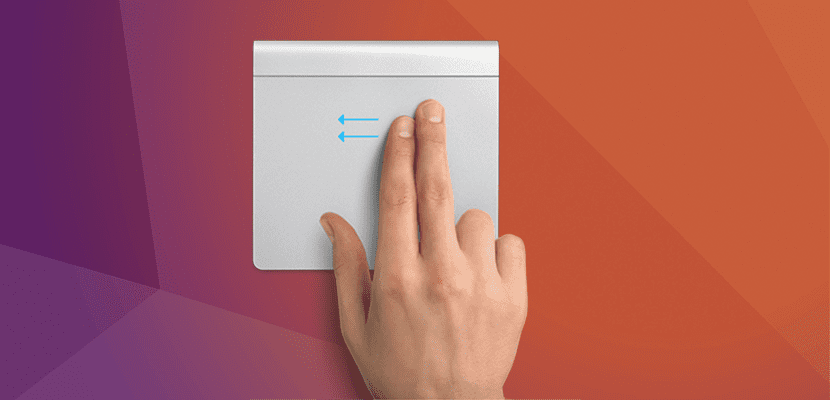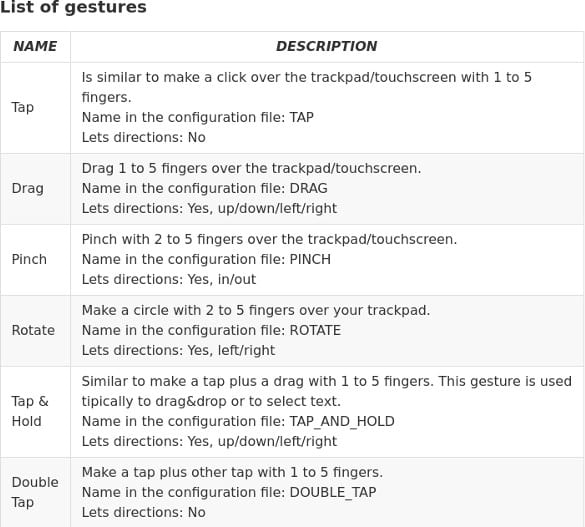
Using several operating systems allows us to be versatile and more productive regardless of the computer we use, but there is something wrong with this: each operating system works in one way, and this is perfectly noticeable when, for example, we go from using Ubuntu to Elementary OS. But the good thing about Linux is that we can modify practically everything and in this post we will teach you how to use the Mac multi-touch gestures in Ubuntu.
It is likely that many users are not interested in the information that we will provide in this post, but surely it is not the same for those who spend a lot of time using MacOS, Apple's operating system that until the summer of 2016 was known as OS X. Although the apple desktop operating system has its flaws, the truth is that its multi-touch gestures will allow us to be more productive.
Mac multi-touch gestures in Ubuntu thanks to touchegg
Before starting with the guide, I would like to mention something: logically, if we do not have a multi-touch touchpad we will not be able to use multi-touch gestures. Multi-touch panels may not be present on computers that have already been behind them for several years, but if you already use some gestures such as tapping with two fingers to secondary click, your computer most likely supports these gestures.
With the above explained, the software needed to use Mac multi-touch gestures in Ubuntu is called touchegg. The tool is old, but it works perfectly because its reason for being is to modify the way in which Ubuntu users interact with our touch panel or touchpad.
Thanks to the software being in Ubuntu's default repositories (at least it is in Ubuntu 16.10), installing touchegg in Ubuntu is as simple as opening a terminal and typing the following command:
sudo apt install touchegg
If your Ubuntu version does not have touchegg in its repositories, you can install the software using the following commands:
git clone https://github.com/JoseExposito/touchegg.git sudo apt-get build-dep touchegg sudo apt-get install build-essential libqt4-dev utouch libgeis-dev libx11-6 libxtst-dev
Finally, we write the following:
qmake make sudo make install
Setting up touchegg
- touchegg is a terminal application, so to configure it we will have to use that application that many hate and many love. We open a terminal and write the name of the program (touchegg).
- The program will detect that we do not have a configuration file and will create one. Once created, we close the window.
- Next, we open the application «Applications at startup», from where we will create an entry for touchegg to start with Ubunu.
- We tap on Add and enter these data (only the second is important):
- Name: Touchegg.
- Command: touchegg.
- Comment: Multi-touch gestures.
- We tap on Add.
- Once the entry is added, we restart the PC.
- To add multi-touch gestures, we open a terminal and type the following commands:
- sudo apt install geis-tools
- nano.xprofile
- We paste this code:
synclient TapButton2 = 0 synclient ClickFinger2 = 0 synclient TapButton3 = 0 synclient ClickFinger3 = 0 synclient HorizTwoFingerScroll = 0 synclient VertTwoFingerScroll = 0 touchegg &
- We press Ctrl + o to save the file, Ctrl + x to exit and we restart the PC again.
- Finally, we open the file
~/.config/touchegg/touchegg.confand we modify the values as explained by your Official Site:

- Play: Similar to clicking the touchpad with 1 or 5 fingers. It does not allow addresses. Name: TAP.
- Drag: drag with 1 to 5 fingers on the touchpad. Allow directions. Name: DRAG ..
- Tongs: make the gesture of joining with from 2 to 5 on the touchpad. Allows inward or outward directions (zoom). Name: PINCH.
- Rotate: as in a smartphone, we can rotate on the touchpad. Allows left and right directions. Name: ROTATE
- Touch and hold: Similar to touch and drag with 1 to 5 fingers. This gesture is often used to drag and drop or to select text. Allow directions. Name: TAP_AND_HOLD.
- Double click. Click one more one with 1 to 5 fingers. Name: DOUBLE_TAP.
Have you managed to use Mac multi-touch gestures on Ubuntu or any other Linux distribution? How about being able to do it?
I have a problem:
$ sudo apt-get build-dep touchegg
Reading package list ... Done
E: You must put some source URIs in your sources.list
$ sudo apt-get build-dep touchegg
Reading package list ... Done
E: You must put some source URIs in your sources.list
Could you help me? I can't get it to work. For some reason it does not detect all 3 fingers.
The configuration is as in the post but I can't make it work, in xinput the following appears:
↳ SynPS / 2 Synaptics TouchPad id = 13 [slave pointer (2)]
When I restart I get an error message from .xprofile "cannot find syncr ..."